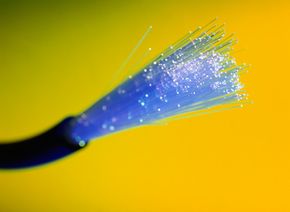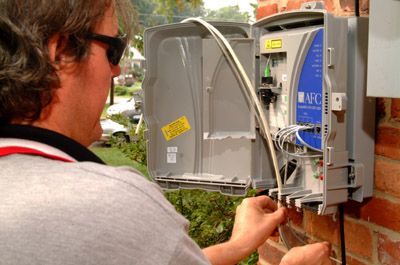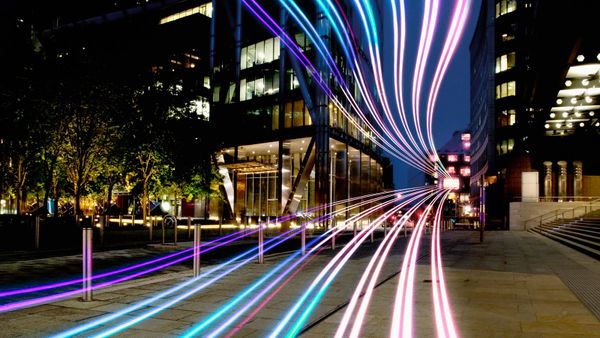Over the last 20 years or so, fiber optic lines have taken over and transformed the long distance telephone industry. Optical fibers are also a huge part of making the Internet available around the world. When fiber replaces copper for long distance calls and Internet traffic, it dramatically lowers costs.
To understand how a fiber optic cable works, imagine an immensely long drinking straw or flexible plastic pipe. For example, imagine a pipe that is several miles long. Now imagine that the inside surface of the pipe has been coated with a perfect mirror. Now imagine that you are looking into one end of the pipe. Several miles away at the other end, a friend turns on a flashlight and shines it into the pipe. Because the interior of the pipe is a perfect mirror, the flashlight's light will reflect off the sides of the pipe (even though the pipe may curve and twist) and you will see it at the other end. If your friend were to turn the flashlight on and off in a morse code fashion, your friend could communicate with you through the pipe. That is the essence of a fiber optic cable.
Advertisement
Making a cable out of a mirrored tube would work, but it would be bulky and it would also be hard to coat the interior of the tube with a perfect mirror. A real fiber optic cable is therefore made out of glass. The glass is incredibly pure so that, even though it is several miles long, light can still make it through (imagine glass so transparent that a window several miles thick still looks clear). The glass is drawn into a very thin strand, with a thickness comparable to that of a human hair. The glass strand is then coated in two layers of plastic.
By coating the glass in plastic, you get the equivalent of a mirror around the glass strand. This mirror creates total internal reflection, just like a perfect mirror coating on the inside of a tube does. You can experience this sort of reflection with a flashlight and a window in a dark room. If you direct the flashlight through the window at a 90 degree angle, it passes straight through the glass. However, if you shine the flashlight at a very shallow angle (nearly parallel to the glass), the glass will act as a mirror and you will see the beam reflect off the window and hit the wall inside the room. Light traveling through the fiber bounces at shallow angles like this and stays completely within the fiber.
To send telephone conversations through a fiber optic cable, analog voice signals are translated into digital signals (see How analog and digital recording works for details). A laser at one end of the pipe switches on and off to send each bit. Modern fiber systems with a single laser can transmit billions of bits per second -- the laser can turn on and off several billions of times per second. The newest systems use multiple lasers with different colors to fit multiple signals into the same fiber.
Modern fiber optic cables can carry a signal quite a distance -- perhaps 60 miles (100 km). On a long distance line, there is an equipment hut every 40 to 60 miles. The hut contains equipment that picks up and retransmits the signal down the next segment at full strength.
See the next page for more information.
Advertisement


